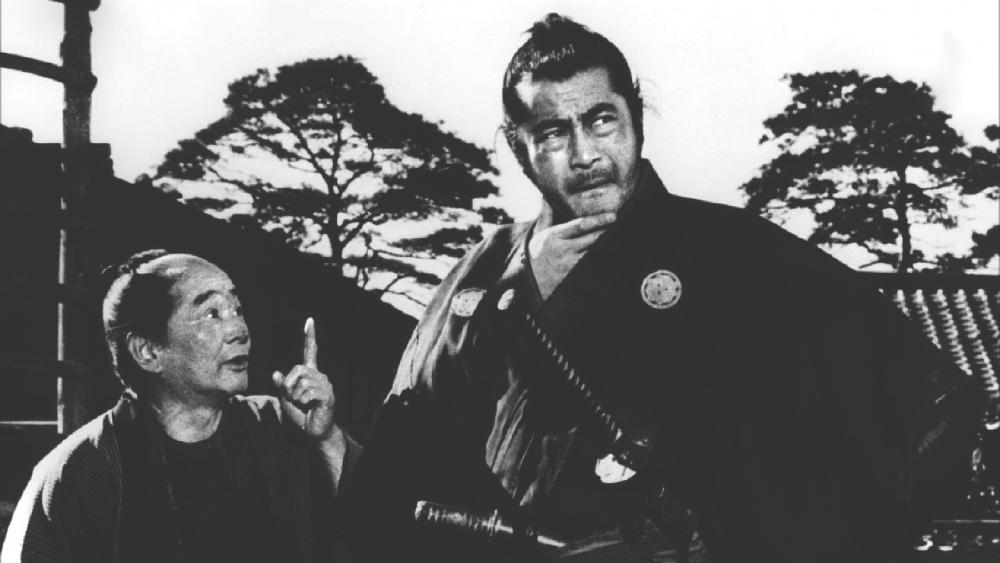Masculinity in Shane and Yojimbo

June 7, 2022
In graduate school, I took a course on film genre. I enjoyed the class, but I wish I’d engaged with it more. At the time, it felt a bit more like an “elective,” unrelated to my dissertation research on LGBTQ social movement rhetoric. This was a mistake. It may be specific to my field, and it’s almost certainly tied to the current academic job market, but I’ve noticed that graduate students (myself included) over-professionalize and over-specialize, often extremely early in their Ph. D.
With 20-20 hindsight, I’ve been going through some of my notes from that film genre class. It was well-designed: each week, we watched two or three films from a particular genre and read a bit of genre theory to help us understand them. Often, the films crossed nations or other sorts of borders, showing just how complicated film genre can be.
One week, we watched Shane and Yojimbo as cross-cultural examples of the Western, which is historically connected to the samurai film in Japan. Both films are titled based on the names of their protagonists and, in each case, the narrative focuses on a male figure entering a town on a “frontier.” Barry Langford noted that within the Western genre the frontier depicts a sort of between-ness, “not a clear boundary but . . . uncertain and shifting” (63). This is apparent in both Shane and Yojimbo, each film narrating a man in a transforming social environment, mediating between the “old” and the “new.”
The “man” of it all is important. Both films rely on a return–or at least an echo–of a supposedly “authentic” masculinity. The first battle between Seibei and Ushitora illustrates this: Yojimbo sits on a tower laughing as the two gangs scare each other but are unable to actually fight. Alternatively, Shane explains to Joey that a real gunfighter only needs one pistol (setting himself apart from the “Black hat” villain who uses two) and later relates to Marion that guns are mere tools to be used by good or bad men. Yojimbo takes a similar stance, one step removed: the sword wielded by the good man is juxtaposed against the villain with the pistol.
There are, of course, important contextual differences in these films’ representations of masculinity. As Randy P. Schiff wrote, Yojimbo is invested in Japanese class identity and in “a credit economy that has advanced nearly to the point where it will destroy the social role of the samurai itself” (66). By contrast, the social struggle in Shane is marked more heavily by ideologies of land and private property. Each hero embodies ideological features of their respective country, mediating changing historical contexts and relations.
Works Cited
- Langford, Barry. Film Genre: Hollywood and Beyond. Edinburgh UP, 2005.
- Schiff, Randy P. 2007. “Samurai on Shifting Ground: Negotiating the Medieval and the Modern in Seven Samurai and Yojimbo.” In Race, Class, and Gender in “Medieval” Cinema New York: Palgrave Macmillan. 59-72.